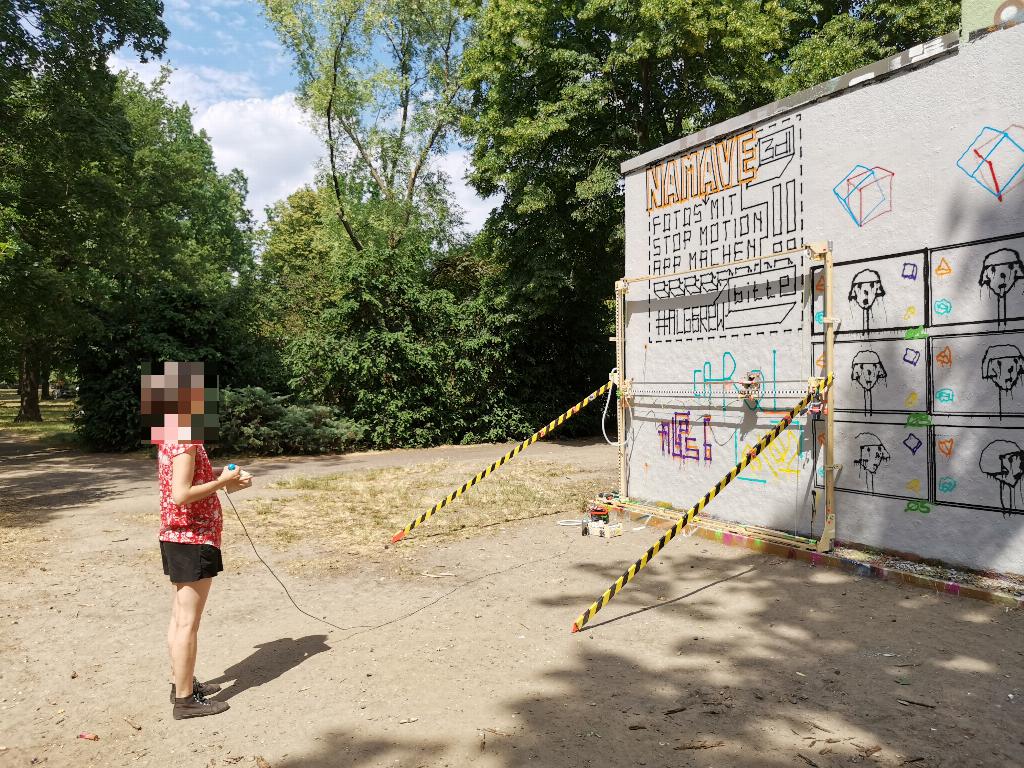04

After visiting the large graffiti walls near his workshop in Berlin, Niklas Roy wanted to get involved by constructing a machine that can do the painting for him. In its most basic form, the system — which Roy calls the Graffomat — consists of two axes that work together to paint either vector or raster images.
The vertical Y axis is driven via a cordless drill, which spins a metal rod to raise or lower the spray can gantry. To the side is a second drill that spins a pulley to move the gantry left or right. The current position of the spray can is tracked by using phototransistors that detect alternating black and white patterns on a tape.
An Arduino Nano was selected as the brains of the operation, and it works by reading in data packets that contain positions or commands. If a movement is needed, the Nano outputs PWM pulses to either the X or Y axis H-bridge motor driver and rotates the drill until the target coordinate is reached. There is also a way to control the machine over the Internet in real-time using a Node.js web server to receive commands and forward them to the Graffomat.

After the system had been built, Roy wanted to begin painting. His first test was a simple “Hello World” vector art graphic, but he then shifted his efforts to a much more complicated picture that emulates an inkjet printer by spraying four matrices of CYMK dots across the wall to produce an image.
To see some other art created by the Graffomat, check out iew Roy’s blog post here.
The post The Graffomat is a giant plotter that automates graffiti art appeared first on Arduino Blog.


